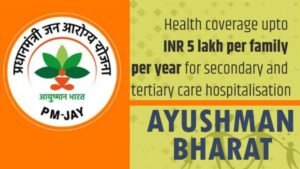Separation of powers under the Indian constitution and the relationship between legislature, executive, and the judiciary
Written By: Naveen Talawar
Introduction
There are three main organs of the government in a state, the legislature, the executive, and the judiciary. According to the theory of separation of powers, in a democratic country, these three organs must be kept separate from each other while exercising their powers and functions.
The theory is of ancient origin, its history is traceable to Aristotle, and in the 16th and 17th centuries the French philosopher John Bodin and the British politician Locke had expounded the theory, later on, the theory was systematically formulated by Montesquieu, the French jurist in his book “Espirit des Lois” (The spirit of laws).
According to him, the separation of powers means a person or a body of persons should not exercise all the three types of powers of the government namely the legislature, the executive, and the judiciary.
He said that if a person exercises powers of both the executive and the judiciary then it leads to an arbitrary power which amounts to complete tyranny.
Black stone also observed that ‘if the legislature the executive and the judiciary in the same hand, there would be an end of personal liberty.
And while explaining the purpose of the doctrine Brandis J, observed that ” the purpose separation of power doctrine is not to promote efficiency in the administration but to preclude the exercise of the arbitrary power.
Principles Governing separation of powers
The separation of power doctrine is based on four principles, are as follows :
- Exclusivity principle: it suggests structural divisions of all the three organs of the state as it is present in the US.
- Functional principle: it prohibits the amalgamation and usurpation but not the interaction of all the organs of the state.
- Checks and balance principle: it means that each organ of the state may check others in order to keep them within the constitutional bounds.
- Mutuality principle: this principle aims at cooperation amongst different organs of the state to create a society of constitutional image which is free, equalitarian, and rule of law society.
Constitutional provisions relating to separation of powers
On a casual glance at the provisions of the Constitution of India, one may say that the Doctrine of Separation of powers is accepted in India but if we look carefully it can be said that the doctrine of Separation of powers has not been accepted in India in its strict sense. some of the provisions of the constitution are as follows:
Article 50 of the constitution provides the state to separate the judiciary from the executive, since it falls within DPSP it is not enforceable.
Article 121 and 211, these articles state that the conduct of the judges of the supreme court or that the high court cannot be discussed in the parliament except in the case of impeachment. And Article 361 provides immunity for the president and the governors from court proceedings.
Judicial pronouncements
It is through some of the decisions of the court that have determined the applicability of the doctrine those are as follows:
Justice Mahajan, in the Re Delhi laws Act, observed that ” it does not admit of any dispute that the doctrine of Separation of powers has strictly speaking no place in the system of government that India has at present under our constitution”.
A similar view was observed by Justice das in Ram Krishna Dalmia v. Justice Tendolkar that “the constitution does not express the existence of Separation of powers and it is true that the division of powers of the government into legislative, executive and the judicial is implicit in the constitution, but the doctrine does not form the essential basis of the foundation stone of the constitutional framework as it does in the US”.
And Ray CJ, in Indira Nehru Gandhi’s case, observed that “in the Indian constitution there is the separation of powers in the broad sense only. The rigid separation of power as under the US and Australian Constitution does not apply to India.
The supreme court in Ram Jawaya v. the State of Punjab observed that the Indian constitution has not indeed recognized the doctrine of Separation of power in its absolute rigidity but the functions of the different organs or the branches of the government have been sufficiently laid down.
The System of checks and balances
Today, the New interpretation of the doctrine has been evolved that seeks to emphasize the functional division of powers.
Then justice Chandrachud observed that “the political recognition of the doctrine is now widely recognized that .. no constitution can survive without the conscious adherence to its fine checks and balance”.
And the supreme court in the Kesavananda Bharathi case held separation of power as a basic feature of the constitution.
Relationship between the executive and the judiciary
The system of checks and balances ensures that each organ can impose checks on the other.
1. The executive makes the appointment of the judges in the higher judiciary.
2. The president and the governors have given the power to pardon, reprieve, respite, or remission of punishments or sentence of any person convicted of any offense.
3. Certain judicial functions are discharged by the quasi-judicial bodies which are also part of the executive.
The judiciary also performs certain executive functions, the Supreme Court functions as an Executive in order to bring about complete justice under Article 142.
Relationship between legislature and judiciary
The judiciary has the power to review the parliamentary enactments if it violates the constitution.
The supreme court through various decisions has issued laws and policies as judicial activism. For example, the Vishakha Guidelines where the Supreme court issued guidelines on sexual harassment. In many places, the parliament has accused the judiciary on the ground of judicial intervention. Parliament has said that the judiciary overreaches its constitutional power.
Relationship between the legislature and the executive
- The members of the government ministries are the members of the legislature.
- If the confidence of the legislature is lost then the executive loses his power.
- The parliament makes the laws and delegates some of the powers to the executive to prepare the detailed policy and to implement them.
Conclusion
The doctrine of separation of powers in today’s context cannot be interpreted to mean either separation of power or the system of checks and balance, but a community of powers exercised in the spirit of cooperation by various organs of the state in the best interest of the people.
References
- https://www.ijcrt.org/papers/IJCRT1812758.
- https://www.cusb.ac.in/images/cusb-files/2020/el/law/w2/Separation_of_Powers1_iv_semester.pdf
- https://papers.ssrn.com/sol3/papers.cfm?abstract_id=2254941
About the Author

Naveen Talawar
Student at Karnataka State Law University’s Law School
BA.LLB(H)
4th Year
Books
- C.K.Takwani, ‘lectures on administrative law’( eastern book company, Lucknow .,6th ed.,2018)
- MP Jain and SN Jain, ‘Principles of administrative law’(Lexis Nexis, Haryana.,7th ed.,2011).
- IP Massey, ‘administrative law’ (Lexis Nexis, Haryana, 9th ed.,2020)
Previous Posts
A Study of Preventive Mechanisms in the Realm of Marine Pollution: Oil Spillage
Delhi’s Air Pollution Governance




